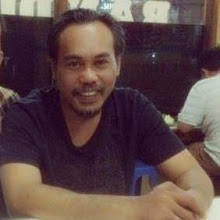Events
Balinese calendars, with illustrations for each day indicating what activities that day is auspicious for, are popular souvenirs. Apart from the everyday Western calendar, the Balinese also use two local calendars, the saka and the wuku calendar. The wuku calendar is used to determine festival dates. The calendar uses 10 different weeks, each from one to 10 days and all running simultaneously.
The Galungan festival, Bali's major feast, is held throughout the island and is an annual event in the wuku year. During this ten day period all the gods, including the supreme deity Sanghyang Widi, come down to earth for the festivities. Barongs prance from temple to temple and village to village. The last and most important day of the ten day festival is called Kuningan.
Hindu saka calendar is a lunar cycle that more closely follows our own year in terms of the length of the year. Nyepi is a major festival of the saka year, it's the last day of the year, the day after the new moon on the ninth month.
The Nyepi celebrations start on the day of the Dead Moon, when "Tawur Agung Kesanga" (Great Sacrificial Ceremony) rituals' are held in welcoming the "Nyepi" holiday. The ritual will be followed by procession of "Ogoh-Ogoh" (huge monster dolls) symbolizing evil spirits along the village and city roads in the evening. "Nyepi" Day is a Holiday and a day of absolute silence through out the island when no activity takes place, no traffic is seen anywhere, no fire is lit. It's the day of self-introspection for Hindhu followers - the evil spirits are tricked into thinking that the entire island is deserted and therefore go away. On this day you will not be permitted to leave your hotel - most hotels and resorts will operate with reduced staff and some services may be affected such as room service, limited restaurant hours. The airport is also officially closed.
Nyepi Day like certain major temples festivals are determined by the saka rather than the wuku calendar. This makes the actual date difficult to determine from our calendar since the lunar saka does not follow a fixed number of days like the wuku calendar. The full moons around the end of September to the beginning of October or from early to mid-April are often the times for important
temple festivals.
Ogoh Ogoh
This is the most important holiday symbolizing the victory of Virtue (Dharma) upon Evil (Adharma). The holiday is specialized by the fitting of 'penjor', a tall bamboo pole splendidly decorated with woven young coconut leaves, fruit, cakes and flowers, on the right side of every house entrance. People are attired in their finest clothes and jewels this day.
This holiday takes place ten days after Galungan, bringing the holiday period to a closing time. On this day, a special ritual ceremony is held for the Ancestral spirits.
This holiday is the Balinese New Year called icaka New Year, the day of total silence throughout the island. No activity, no traffic at all on the roads, no fire may be lit for 24 hours. Great purification and sacrificial rites are held the day before so as to exorcize evil spirits from every corner of the island.
This day is devoted to God's Manifestation as Dewi Saraswati, the beautiful Goddess of Knowledge, Art and Literature. On this day, books of knowledge, manuscripts and the Wedas are blessed and special offerings are made for them.
The name literally means 'iron fence', on which day ceremonies and prayers are held for strong mental and spiritual defense in welcoming the Galungan holiday.








